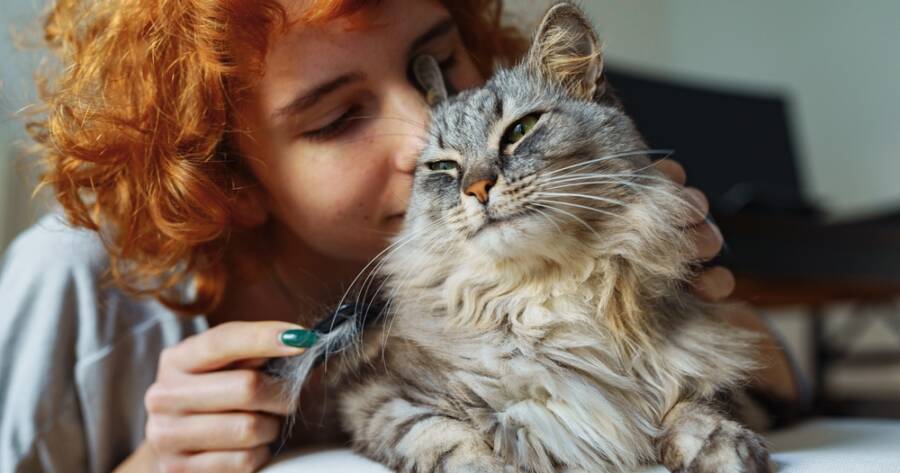Pets are masters at hiding pain, often masking discomfort until it becomes serious. Subtle changes in behavior, movement, or mood can easily go unnoticed but they’re often the first clues that something isn’t right. Learning to recognize these hidden signals can make all the difference in catching health issues early. When you know what to look for, you can step in sooner, easing your pet’s pain and giving them the comfort they deserve.
Changes in Activity Level
One of the most common yet overlooked signs of pain is a sudden change in how active your pet is. Dogs who normally love walks may start to lag behind, hesitate on stairs, or avoid jumping into the car. Cats may stop climbing furniture or begin sleeping more than usual. These shifts can easily be mistaken for aging or laziness, but they often point to underlying discomfort.
A drop in playfulness or reluctance to move could be related to joint issues, internal pain, or injury. On the flip side, some pets may become restless or pace frequently as a sign of distress. Monitoring your pet’s energy level closely can help you catch early signs of pain that might otherwise be missed.
Unusual Aggression or Irritability
A pet in pain may suddenly growl, snap, or swat when touched, even if they’re normally friendly and tolerant. Cats may hiss when picked up, while dogs might shy away from petting or flinch at your hand. These behaviors are not signs of bad temper, they’re often your pet’s only way of communicating that something hurts.
If your once-affectionate pet is acting grumpy or defensive, take note of when and where it happens. Painful joints, dental issues, or abdominal discomfort can trigger this response. Pay attention to patterns and avoid assuming it’s a behavioral issue without first considering the possibility of pain.
Changes in Grooming Habits
Excessive licking or chewing at a specific body part—like a paw, hip, or side—can be your pet’s way of trying to soothe a painful area. Cats may over-groom to the point of hair loss, while dogs may lick a sore joint raw. Alternatively, a pet in pain may groom less, leading to a dull, greasy, or matted coat.
Lack of grooming is especially common in cats with arthritis, dental pain, or internal illness. If you notice a difference in how your pet maintains their coat—or if they’re constantly fixated on one spot—it’s worth getting it checked. Grooming behavior is a strong indicator of overall well-being and comfort.
Changes in Eating or Drinking Habits
Pain often affects appetite. Dental issues, nausea, or general discomfort can cause your pet to eat less, skip meals, or chew more slowly. Cats may stop crunching dry food and switch to licking wet food, while dogs might drop kibble or chew on just one side of the mouth. These small clues can be the first sign of oral pain or gastrointestinal distress.
Likewise, increased or decreased water intake could point to pain-related health conditions like kidney disease or infection. Don’t ignore subtle shifts in mealtime behavior—they can be among the earliest signs that something isn’t right. A sudden appetite change should always prompt a closer look.
Changes in Posture or Movement
Watch for subtle changes in the way your pet carries their body. Dogs in pain may arch their back, tuck their tail, or avoid putting weight on a particular limb. Cats might sit in a hunched position, walk stiffly, or stop jumping to favorite perches. These posture changes are easy to miss, especially if they happen gradually.
Some pets may also stretch more often or hold themselves tensely. Pain can affect everything from the way your pet stands to how they lie down. If something looks “off” in how your pet moves, trust your gut and consult your vet. Small physical adjustments often speak volumes.
Vocalizations and Facial Expressions
While pets don’t speak, they do communicate pain through sound and expression. Whining, whimpering, growling, or low-pitched meows can all indicate discomfort. Some pets become unusually quiet when hurting, while others may cry out when touched or when getting up. If your pet is making new or unusual sounds, pay close attention.
Facial expressions can also offer clues—squinting, drooping ears, tense jaws, or wide eyes are often signs something’s wrong. Cats, in particular, are skilled at masking pain but may display “pain faces” if you know what to look for. Subtle changes in how your pet looks or sounds can be early cries for help.
When Something Feels Off, Pay Attention
No one knows your pet better than you. When you sense something’s off, whether it’s a change in their eyes, behavior, or energy, it’s worth taking seriously. Pets may not always show pain in obvious ways, but the subtle signs are there if you know how to spot them.
Trust your instincts, monitor changes closely, and don’t hesitate to contact your vet. Catching pain early can lead to faster treatment, greater comfort, and a better quality of life for the animal you love.

